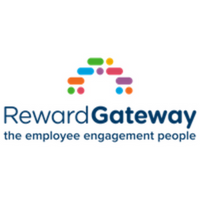5 tips for setting your wellbeing programme up for success

To set you up for success, here are five tips to help you get there. You’ll notice that I’ve included data from REBA’s 2017 employee wellbeing research, which is a great resource for better understanding wellbeing trends.
1) Start by setting your wellbeing strategy
Question, if you were planning a holiday, wouldn’t you first select your destination? You may look at your budget and the dates you’re available, but the real decision is, where would you go? The same is true with your wellbeing programme, as it needs a wellbeing strategy in order to determine its destination.
According to REBA’s report, “Employers are rolling out wellbeing strategies for their workplaces at a rate never seen before. Some are highly sophisticated with strategic links to business culture and board reporting. Others are simply a collection of wellbeing initiatives.” No matter how they look, sophisticated or straightforward, the key here is to set your strategy. Decide why you’re putting in place a wellbeing programme and what you hope to achieve.
2) Listen to your employees
As with any reward programme, wellbeing programmes should be based on what is right for your workforce. This means taking the time to fully understand their needs, and not jumping in and doing what we think is right.
To illustrate this, let’s look at data from REBA’s report. It lists the three initiatives most effective for businesses as an EAP, on-site medical support and mental health support. However, the same report shows that the three most popular among staff are free fruit, discounted or free gym membership and onsite medical support.
Now I’m not saying that we should always give employees exactly what they want, for they may not always know what products are available and/or have the best knowledge on the topic. However, we should at least listen to them before putting in programmes to make sure we have their input before making decisions.
And who knows, they may give you ideas you’d never even thought of. For example, if I hadn’t listened to my employees when doing wellbeing focus groups, we’d never have developed our wellbeing allowance, which was based on hearing the wide range of wellbeing needs of our workforce. The allowance gives employees up to £500/annum to spend on wellbeing activities of their choice.
3) Leverage technology
Technology has become a huge enabler, allowing us to do things we never dreamed of. You want proof? On my last business trip I started the day by doing an online exercise class in my hotel room (using the online classes I had downloaded from my company’s wellbeing portal), logged it into my wearable device (which I had bought using my wellbeing allowance), and finished by doing a mindfulness exercise (using a free app which was mentioned on my company’s wellbeing portal).
However, according to REBA’s report, “digital wellbeing products are relatively new to the market and still not commonly offered”. Considering our workforce, which as we all know is being taken over by millennials, expect technology as it so much a part of their lifestyle, we all need to leverage it to help us achieve our strategic wellbeing objectives.
4) Put some money into it
According to REBA’s report, the median annual spend on wellbeing per employee is between £51 and £75 in businesses with a defined wellbeing strategy (which is less than half the companies in the study). This drops to between £1 and £25 at organisations without a strategy, excluding cost of insurances.
Why is this? We’ve all seen the data to show that wellbeing can help our employees be more productive, more resilient to stress and emotional pressures, as well as lower the cost of sickness, absenteeism and healthcare.
So if you want to achieve the benefits of wellbeing, you’re going to need to spend more than the cost of a latte to improve the wellbeing of your workforce. As the expression goes, you need to ‘play to win’, so if you don’t invest in wellbeing, your company will see the positive results.
5) Measure the results
In my last tip I suggested investing money, however, let me follow this up by saying that I don’t believe you should invest money if you’re not going to measure your results.
Why, because if you don’t measure your results, doing so based on solid objectives, then it’s like throwing money away. Your business deserves to know exactly what they’re getting out of their investment in wellbeing, so you’ll need to find ways to measure and report back to them on your findings.
So whether it’s through ROI (return on investment) or VOI (value on investment), the key is to select those that align with your strategy and report back in meaningful ways.
In ending, let me say that whatever you decide to do in the wellbeing space, if done well it will have a positive effect on your business and your workforce. As said in REBA’s report “looking after your employee wellbeing is a win-win for everyone”, which is definitely a successful outcome for everyone.
Debra Corey is group reward director at Reward Gateway.
This article was provided by Reward Gateway.
Supplied by REBA Associate Member, Reward Gateway
We help the world's leading companies with an employee engagement platform.






